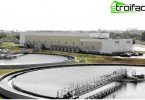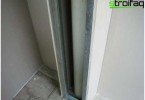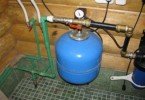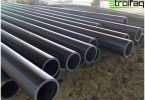Replacement and proper wiring of water pipes
What is the key to a carefree stay in a private house or apartment? It is difficult to answer unequivocally, is not it? But nevertheless, a well-established work of engineering communications complexes is rightfully considered to be a powerful “foundation” of comfort and coziness in housing (you must admit that it is impossible to calmly enjoy the beauty of freshly heated wallpaper, knowing that a pipe leaks in the bath), among which water supply occupies one of the prerogative places. The life of any mechanisms and materials is limited, so the need for major repairs of many systems that provide the benefits of civilization to our modest cloisters comes sooner or later. Replacing water pipes is a responsible and difficult process, but quite feasible.
Content
- Reasons for replacing plumbing pipes?
- Detailed plan
- Types of pipes: their advantages and disadvantages
- Types of wiring, their specifics
- Self-installation of plastic pipes
Reasons for replacing plumbing pipes?
The first and main reason is the logical end of their service life: it is impossible not to notice that the system has fallen into disrepair. Also, the reason for the repair may be internal “overgrowing” of pipes by salt deposits, deterioration in their throughput, and the compulsion to change the route of pipe laying.
Detailed plan
Pre-determine the installation location of the pipes, the required number of “accessories”. Make on paper the most accurate, detailed sketch of the route indicating the location of the cranes, etc..
Be sure to check all “problem” zones, prospective turns. Measure everything carefully again, do not be lazy to double-check the received numbers.
Types of pipes: their advantages and disadvantages
The choice of pipes is an issue no less important than competent planning.
Galvanized steel pipes
+ resistant, strong, durable, able to serve for more than a dozen years.
– amenable to corrosion, prone to the formation of “growths”, the resulting rust sharply affects the quality of the water, the complexity of installation.
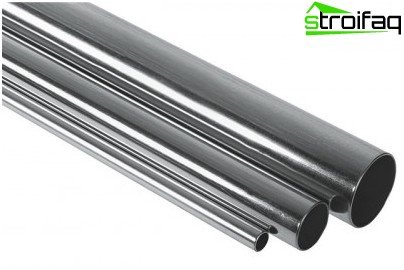
Galvanized steel pipes
Copper pipes
+ durable, smooth, do not rust.
– high cost, complexity of installation.
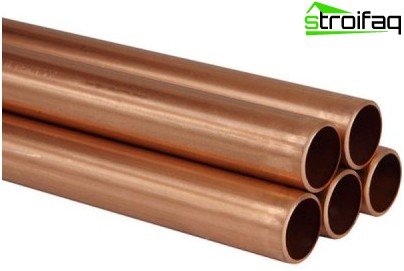
Copper pipes for water supply
Polyethylene pipes
+ easy installation, affordable price.
– do not bend, poorly withstand low temperatures.
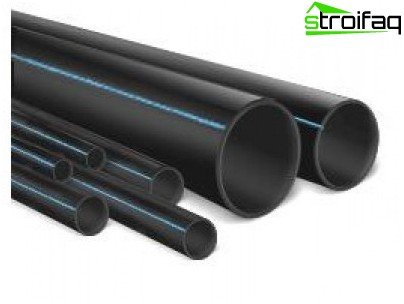
Polyethylene pipes for water supply
PVC pipes
+ ease of connection, low price, resistance to high pressure.
– fragile with a “minus”, sensitive to ultraviolet.
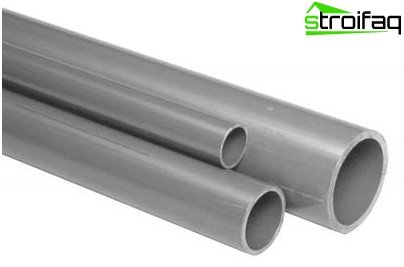
PVC pipes
Polypropylene pipes
+ frost resistance, hidden gasket.
– cannot be bent, installation is not possible without a special apparatus.
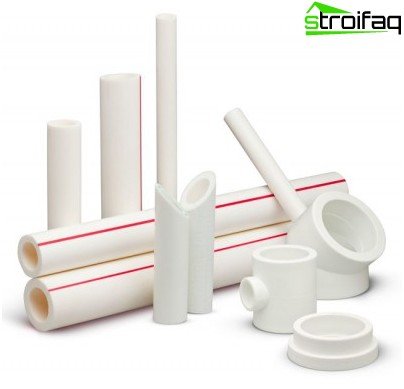
Polypropylene pipes for water supply and special connecting elements
Plastic pipes
+ ease of installation, bend.
– expensive fittings.
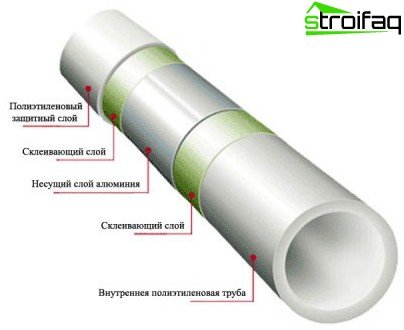
The structure of the plastic pipe
Types of wiring, their specifics
The operability of the entire water supply system directly depends on how well the piping of the water supply is done with your own hands.
There are two types of it – collector and tee.
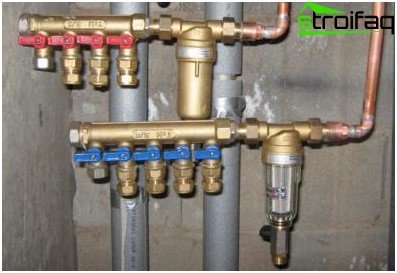
Pipe manifold
In the first case, each plumbing element is connected to the water supply independently. In the event of a breakdown, any of the “devices” can be turned off without affecting the functionality of the rest.
Tee wiring is a serial connection of all plumbing to each other and the water supply. System troubleshooting is only possible when the entire line is blocked (dehydration of the whole apartment).
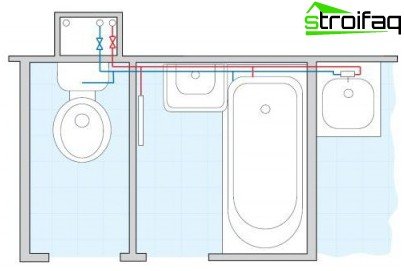
Minus tee pipe layout – the need to completely shut off the water supply line for repairs and maintenance
Basic rules for wiring water pipes:
- Fewer joints and turns – higher system performance.
- The diameter of the pipes can not be selected, starting solely from their own wishes: technical aspects should also be taken into account.
- Laying should be carried out without tension, away from fire hazardous and sharp objects.
Self-installation of plastic pipes
When the plan is ready and all the necessary materials are purchased, you can proceed directly to the installation.
Ensure that all stopcocks are tight. Otherwise, they must be replaced, and after that proceed with the removal of the old waterworks.
The most popular today are plastic pipes, due to their good performance and optimal balance of price and quality. Installation thereof is carried out using threaded fittings and does not require the use of any tricky devices. Experience of such work in this case is not required. Cut a previously measured piece of pipe (perpendicular to the axis) with a hacksaw or with a pipe cutter. With a sharp knife, remove the burrs. Loosen the nut on the fitting and push the pipe all the way into it. Tighten the nut until the connection is as tight as possible..
For the independent installation of PVC pipes, you will need scissors, an emery cloth, a knife, a primer and glue. Trim them also strictly perpendicularly. With a knife, remove the chamfer, sand with sandpaper to smooth out irregularities. Coat the end of the pipe and fitting thoroughly with a primer – this will provide better penetration of the glue. Apply glue in a thin layer. Insert the pipe into the socket all the way and turn a quarter of a turn.
Important! Hold the parts to be glued for about 20 seconds.
Installation of copper pipes is carried out using soldering or crimping fittings. The second case is simpler and more affordable for ordinary people, for whom replacement of water supply pipes with their own hands is still new. Cut the pipe with a hacksaw for metal, clean the end of the burrs, remove the chamfer. Then disassemble the fitting, put on the crimp ring and nut. Install the fitting and tighten the clamping nut by hand.
Attention! Be sure to make sure that the conical ring fits without distortion – only after that it is recommended to make final fixation with a wrench.
When planning pipe replacement, do not try to save. By choosing high-quality materials, you will forget about problems with water supply for many years..


